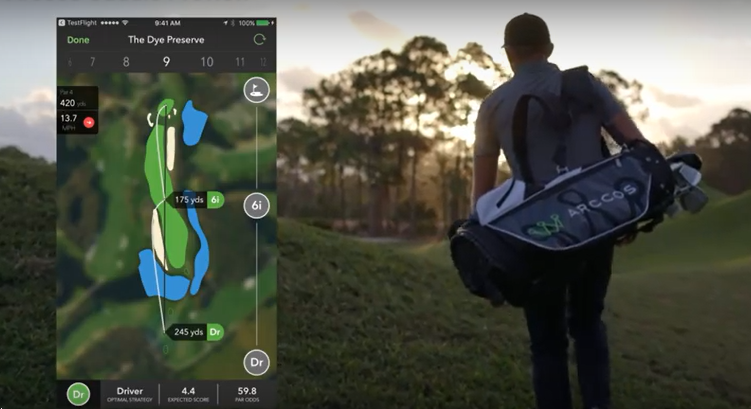At Hashtag Sports, tech trailblazers reveal how they are elevating our favorite games
From the tee, weekend golfer Sal Syed eyed the flag, 148 yards away and down a small slope. The math came next. He usually drove 139 yards with his 9 iron. The hill, he calculated, would push the ball another nine yards, maybe 10. Perfect.
Before reaching into his bag, Syed checked his phone. His Arccos Caddie app had different advice: Use your 8 iron. Syed looked at the two human caddies in his foursome. They said: 9 iron. Syed listened to the cloud and grabbed the 8. He expected his shot to fly the green. “But maybe I’m wrong,” he said to himself in April. “Maybe it’s right.”
His tee shot rose, stalled a touch in the spring winds over Tamarack Country Club, bounced on the seventh green and rolled straight and sweet – into the cup. A hole-in-one for Syed, an ace for the golfing app Syed is now bringing to market.
“It really actually happened. That was my first time playing with Arccos Caddie,” said Syed, CEO and co-founder of Connecticut-based Arccos, a leading provider of big data, advanced analytics and machine learning insights for the golf industry. “After that, I was like, OK, I am going to stop questioning and start listening.”
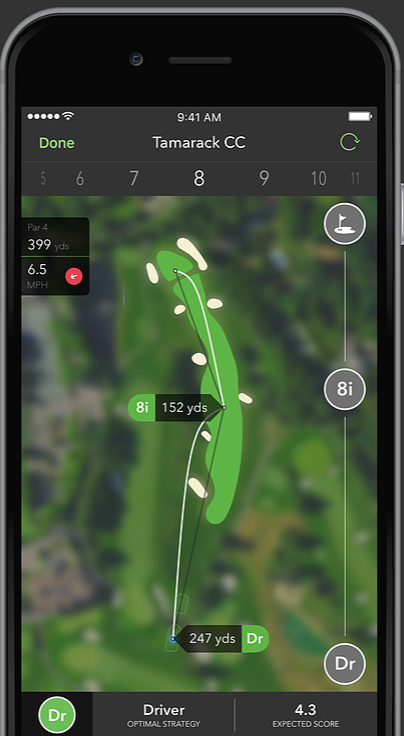
Wednesday, Syed will showcase Arccos Caddie during a Microsoft-hosted media event at Hashtag Sports, an innovation conference in New York City exploring the convergence of media, sponsorship, content, advertising and culture. Microsoft is an official partner of the event.
His platform is built atop another company product, Arccos 360, which consists of an app that pairs with a tiny sensor in each club grip to record and analyze every shot by users. To date, the data from more than 70 million actual golf shots – as well as 368 million geotagged data points on more than 40,000 golf courses – are catalogued in Microsoft Azure.
From that cloud data, Arccos Caddie uses Azure machine learning to predict the optimal path a player should take from tee to green, using shot data, course data, weather and elevation. All of this plays a critical role in helping a golfer decide how best to attack any hole in the world.
“For my hole-in-one, Arccos Caddie figured out that with an 8 iron, the wind and elevation would balance each other,” said Syed, a scratch golfer. “But my story is not unique. One guy using Arccos got back-to-back birdies for the first time in his life. Another said that before Arccos, during 40 years of golf, he had no holes-in-one. Now he has two.”
PGA TOUR
At the professional level, holes-in-one remain a rare bird. Among active PGA TOUR players, the current record for career aces is 10. To enable consumers to grab fast stats like that, the PGA TOUR soon will launch a new bot for Facebook Messenger.
The cloud-based tool, fueled by Microsoft Azure, answers questions like: “Who is leading the FedEx Cup?” and “Who leads the PGA TOUR in strokes-gained putting?” Designed to enable casual fans to sound like golf experts, the bot also supplies the latest details from ongoing PGA TOUR events, including ticket info and individual tee times.
The bot pulls raw data from the TOUR’s Content Relevancy Engine, or CRE – a project Microsoft is working on as the Official Analytics Partner of the PGA TOUR. Using Azure cloud-based services, the CRE analyzes PGA TOUR content back to 1916, sifting through stats, scores and photos plus video and social media posts to provide relevant, real-time information during tournaments.
The TOUR envisions letting broadcasters use the CRE for their commentary, and as work on the system progresses, distributing it on the organization’s website and through social media to help boost fan engagement. Here’s how it would work: If a golfer hits a ball that’s wedged in a tree, CRE could instantly entertain viewers by offering more videos that show shots from other improbable locations, such as hospitality tents.
Production on the bot begins in July. No other league offers a platform like it, organizers say. Scott Gutterman, the PGA TOUR’s vice president of digital operations, will demonstrate the bot at the Hashtag Sports media event hosted by Microsoft.
FoxTales
The quest for deeper fan engagement is sparking an era of fresh innovation across the sports landscape. There’s super-specialized seating, like the Judge’s Chambers at Yankee Stadium. There’s super-special tweeting, like the Philadelphia 76ers’ consistently comical content. And there are connected stadiums where rooters can order beers to their chairs, replays to their phones or directions to the closest restroom.
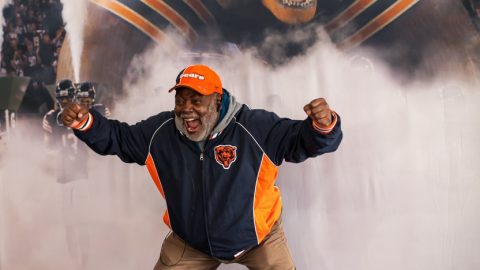 A California company gives fans some of the most exciting sports moments – the kind that wind up on Facebook. FoxTales creates customized, sharable, interactive-media experiences. They deploy their cloud-connected hardware at stadiums and sports events, providing a place for fans to pose for immersive and branded portraits, animated gifs, burst gifs, 360 videos and more.
A California company gives fans some of the most exciting sports moments – the kind that wind up on Facebook. FoxTales creates customized, sharable, interactive-media experiences. They deploy their cloud-connected hardware at stadiums and sports events, providing a place for fans to pose for immersive and branded portraits, animated gifs, burst gifs, 360 videos and more.
Those same photographed fans then post those images and videos to their social media pages, showing their friends how they virtually dashed onto Soldier Field in Chicago, or how they now adorn a big league baseball card.
The visuals, in turn, are a conduit to a new relationship between the team (or event) and the fan, said Josh Hubberman, co-founder and CEO of FoxTales.
For example, when creating a custom baseball card, a fan enters their name, the year they began pulling for the team, the position they play on the field, and the name of their favorite player. That data gets pushed to Microsoft Azure and shared with the FoxTales client, giving the team new insights and valuable data to help them better understand and, ultimately, communicate with their fans.
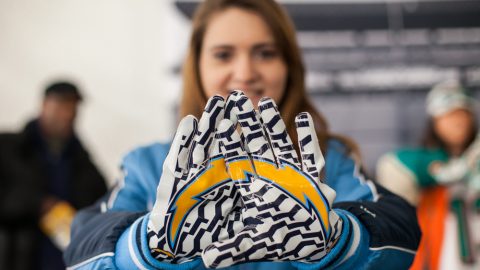
“Every marketer wants to better understand their consumer so they can connect on richer levels and have more meaningful conversations,” Hubberman said. “No consumer who’s at a great event wants to be marketed to; they need to be talked to in their own language.
“So how do you do that? You gift for fans with a memorable and sharable experience that represents who they are. By gifting your fans, they will gift you back in the form of information and an open door to conversation,” said Hubberman, who will demonstrate the custom baseball card technology at the Hashtag Sports media event.
FoxTales has deployed kiosks at the 2016 NFL Draft in Chicago, at a NASCAR race at Charlotte Motor Speedway, at the Boston Red Sox annual Winter Weekend for fans, and at NBA season kick-off events at Nike retail stores in New York, Chicago and San Francisco.
“Fans love sharing their love for their team on social media, and FoxTales is their fuel to do so,” Hubberman said.
Seattle Reign FC
The very bottom line for all sports – found at the end of a game, match, race or season – is a simple metric with two columns: wins and losses. Scoreboard, baby.
Some teams are turning to emerging technologies to sharpen their competitive edge and squeeze out a few more precious wins. The Seattle Reign FC, a professional women’s soccer team, is embracing a new way to efficiently measure and manage the cumulative toll that months of training, practicing, drilling and game action takes on players’ bodies.
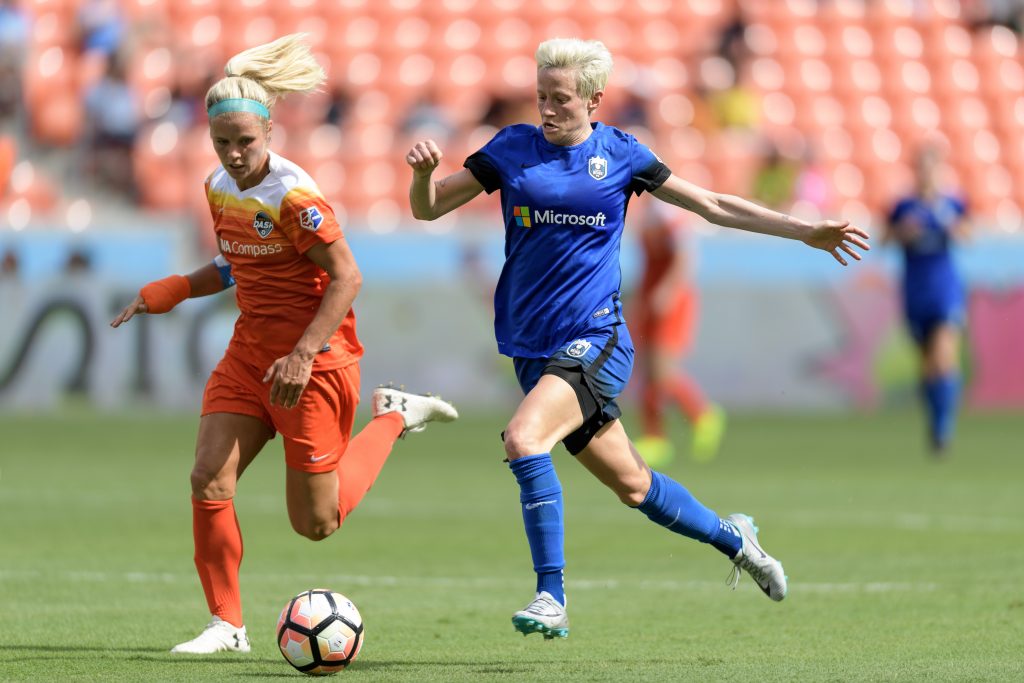
The Reign staff believes that by using the Sports Performance Platform, a Microsoft Garage project, the team can boost on-field performance by a collective 1-2 percent, which could be enough to scrounge up additional goals and extra victories, said Bill Predmore, the club’s owner.
His calculation is colored by some physical agony: The Reign sustained injuries to key players in 2016, including midfielder Jess Fishlock and forward Manon Melis. By the end of the National Women’s Soccer League regular season, the Reign had tallied eight wins in 20 games. The team missed the playoffs by two points.
“Last year was painful,” Predmore said. “One might argue that the injured players – not having them on the pitch – was the difference in not getting in the playoffs. It was a goal here and a goal there.”
Now, the owner, coaches and trainers are relying on the Sports Performance Platform to help dial in the training load for individual players, measure their recovery from drills and games, and better detect the fine line between overwork and injury.
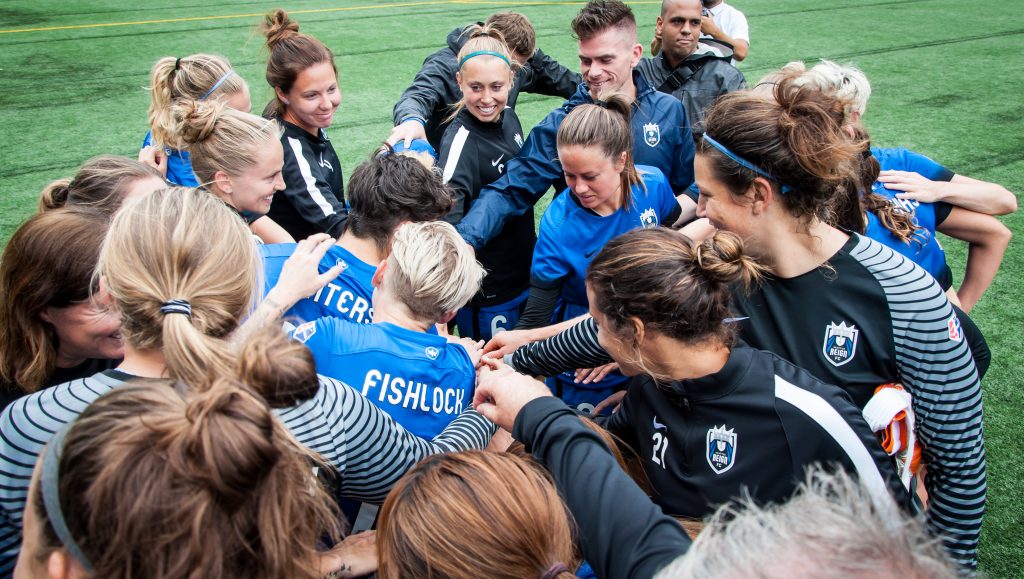
The technology combines and analyzes three current but disparate datasets: GPS tracking of the players’ activity on the field, player-completed wellness summaries detailing how they feel each morning, and reports by the players rating the intensity of each day’s practice.
“By combining the subjective assessments with the data, we can get a fuller and more accurate picture of where the players are,” Predmore said. “Broader patterns are revealed over time and over a number of players. Without a powerful tool to do that analysis and do some of that thinking for us, we would just miss these patterns in the data.”
At the Hashtag Sports media event, Reign staff will demonstrate their use of Microsoft’s Sports Performance Platform.
“Our hope,” Predmore said, “is that this will allow the players to perform at a higher level which, ultimately, should make us more effective on the field.”
NASCAR
During a race, NASCAR officials sometimes need to locate one car on the track. Sounds simple. It’s not. That car may be pushing 200 mph inside a swirling field of 40 drivers spread out on a 2.5-mile course or longer.
Now they have a tool to do that task in true NASCAR style – fast. Using the race management app, built on Windows 10 and the Microsoft Cloud, officials can click on a car number and instantly see that driver’s position on the track, when the car got fresh tires or help predict when it will next stop for fuel.
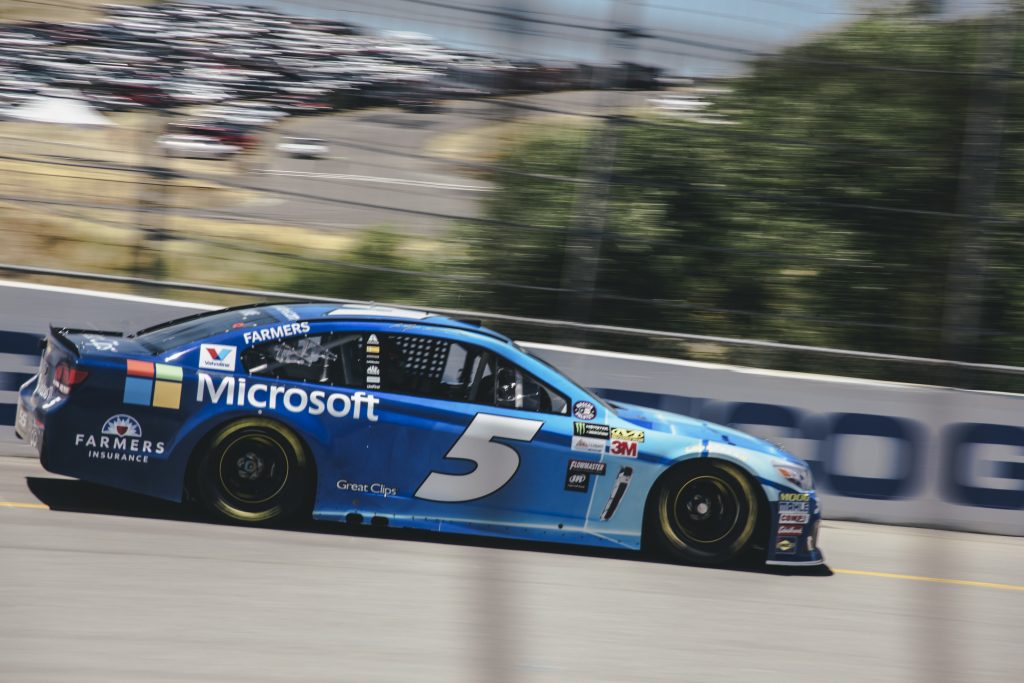
Officials can also use the app to see – on a single window – how much time the race has been run under green, yellow and red flags; how many cars are in the garage; whether pit road penalties occurred; and how many current points a team has as it trades paint and positions on the track. NASCAR, which introduced the app in 2016, officially launched it Sunday for the Toyota/Save Mart 350 at Sonoma Raceway. During panel talks and demonstrations at the Hashtag Sports conference, NASCAR officials will discuss the race management app.
The app includes new video components, like “freeze the field,” which gives NASCAR new capabilities to examine and dissect live video of the race and video post-race. Officials can use it to see individual cars better within the fluid motion of the field, a typically difficult task.
“Running a race requires many people consuming data from many different sources and then coordinating that information into a seamless operation,” said John Probst, NASCAR managing director of competition innovation. “Historically, this information and data has been presented in a piecemeal form – little bits of information spread across many monitors or printed on individual sheets of paper.
“With the race management app, we have been able to combine all of this information and present it to officials in a logical way,” Probst said. “One application, one display.”
To learn more about Microsoft’s passion for improving sports performance, visit the Official Microsoft Blog.
Top image courtesy of Arccos.

